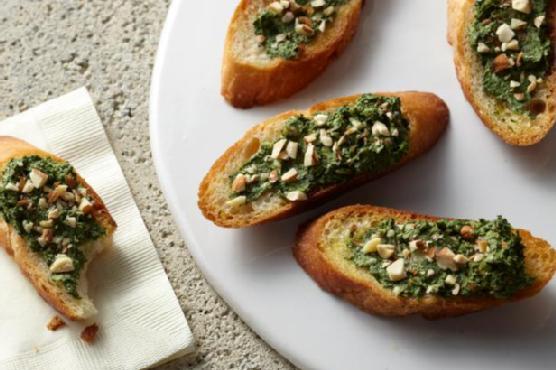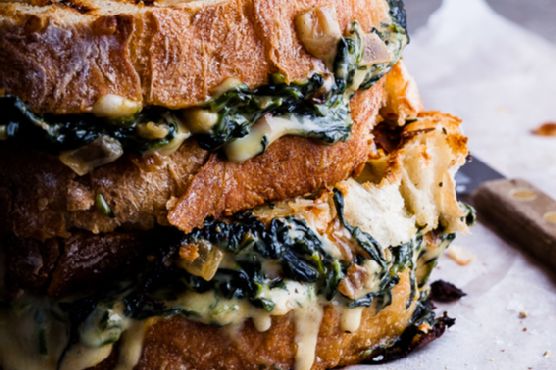Turbinado Creme Brulee Tart
If you want to add more Mediterranean recipes to your recipe box, Turbinado Creme Brulee Tart might be a recipe you should try. One serving contains 268 calories, 7g of protein, and 12g of fat. This recipe serves 8 and costs 97 cents per serving. 40 people have tried and liked this recipe. Head to the store and pick up sea salt, graham crackers, greek yogurt, and a few other things to make it today. It is brought to you by Foodnetwork. From preparation to the plate, this recipe takes roughly 5 hours and 15 minutes. It is a good option if you're following a lacto ovo vegetarian diet. Taking all factors into account, this recipe earns a spoonacular score of 16%, which is rather bad. Try Crème Brûlée Tart, Blueberry Creme Brulee Tart, and Coconut Crème Brûlée Tart for similar recipes.
Servings: 8
Preparation duration: 20 minutes
Cooking duration: 295 minutes
Ingredients:
3 large eggs, at room temperature
5 ounces lowfat honey graham crackers (9 rectangles or 1 package from a 3-package box)
1/2 cup (4 ounces) 2-percent Greek yogurt
1 8-ounce package full-fat cream cheese
1/2 teaspoon finely grated orange zest
1/8 teaspoon fine sea salt
Pinch fine sea salt
1 tablespoon turbinado sugar
9 tablespoons (4 ounces) turbinado sugar
3 tablespoons (1 1/2 ounces) unsalted butter
1 teaspoon pure vanilla extract or vanilla bean paste
1/2 teaspoon pure vanilla extract
Equipment:
tart form
oven
food processor
paper towels
bowl
measuring cup
microwave
frying pan
wire rack
Cooking instruction summary:
Special equipment: a 9-inch fluted tart pan with a removable bottom; kitchen torch For the crust: Position a rack in the center of the oven and preheat the oven to 375 degrees F. Place the graham crackers, sugar and salt in the bowl of a food processor. Process until the crumbs are very fine, about 1 minute. Dump the crumbs into a medium bowl, then dust out the bowl of the food processor with a paper towel, and place the bowl and blade back on the machine. In a small heatproof bowl, combine the butter, 2 teaspoons water and the vanilla extract. Heat in the microwave on high power until the butter melts, about 45 seconds. Stir to blend, and then pour into the crumbs. Use a fork to toss the mixture until its evenly moistened; when you grab a fistful of crumbs and squeeze, it should hold together like damp sand (if not, add a bit more water, 1/2 teaspoon at a time, until you get there). Turn the crust mixture into the tart pan, and pat into the bottom and up the sides of the pan. Use a flat-bottomed measuring cup to press the crust firmly into place. Bake until lightly golden, fragrant and firm, about 8 minutes. Cool on a wire rack while you prepare the filling. For the filling: Reduce the oven temperature to 300 degrees F. In the bowl of the food processor, grind 6 tablespoons of the sugar until noticeably finer, about 1 minute (you'll notice a bit of sweet smoke rising up into the air from the processor-this is the sign that the sugar is breaking down). Add the yogurt, vanilla extract, orange zest, salt, eggs and cream cheese. Blend until perfectly smooth. Pour the filling into the prepared crust. Bake until the filling is set at the edges but still quite wobbly towards the center, about 30 minutes. Cool the tart on a wire rack for about 15 minutes. Transfer to the refrigerator and chill uncovered until very firm, at least 4 hours or up to overnight. Remove the ring from the tart pan and place the tart on a heatproof serving platter. Sprinkle the remaining 3 tablespoons sugar over the surface of the tart and smooth it out evenly, covering the entire surface. Use a kitchen torch to melt and caramelize the sugar, scorching a bit in spots. Let the sugar harden for a few minutes, then cut and serve.
Step by step:
1. Special equipment: a 9-inch fluted tart pan with a removable bottom; kitchen torch
2. For the crust: Position a rack in the center of the oven and preheat the oven to 375 degrees F.
3. Place the graham crackers, sugar and salt in the bowl of a food processor. Process until the crumbs are very fine, about 1 minute. Dump the crumbs into a medium bowl, then dust out the bowl of the food processor with a paper towel, and place the bowl and blade back on the machine.
4. In a small heatproof bowl, combine the butter, 2 teaspoons water and the vanilla extract.
5. Heat in the microwave on high power until the butter melts, about 45 seconds. Stir to blend, and then pour into the crumbs. Use a fork to toss the mixture until its evenly moistened; when you grab a fistful of crumbs and squeeze, it should hold together like damp sand (if not, add a bit more water, 1/2 teaspoon at a time, until you get there). Turn the crust mixture into the tart pan, and pat into the bottom and up the sides of the pan. Use a flat-bottomed measuring cup to press the crust firmly into place.
6. Bake until lightly golden, fragrant and firm, about 8 minutes. Cool on a wire rack while you prepare the filling.
7. For the filling: Reduce the oven temperature to 300 degrees F. In the bowl of the food processor, grind 6 tablespoons of the sugar until noticeably finer, about 1 minute (you'll notice a bit of sweet smoke rising up into the air from the processor-this is the sign that the sugar is breaking down).
8. Add the yogurt, vanilla extract, orange zest, salt, eggs and cream cheese. Blend until perfectly smooth.
9. Pour the filling into the prepared crust.
10. Bake until the filling is set at the edges but still quite wobbly towards the center, about 30 minutes.
11. Cool the tart on a wire rack for about 15 minutes.
12. Transfer to the refrigerator and chill uncovered until very firm, at least 4 hours or up to overnight.
13. Remove the ring from the tart pan and place the tart on a heatproof serving platter. Sprinkle the remaining 3 tablespoons sugar over the surface of the tart and smooth it out evenly, covering the entire surface. Use a kitchen torch to melt and caramelize the sugar, scorching a bit in spots.
14. Let the sugar harden for a few minutes, then cut and serve.
Nutrition Information:
covered percent of daily need















